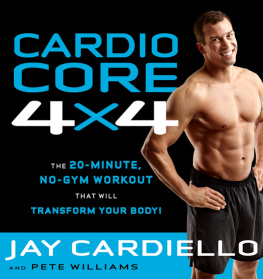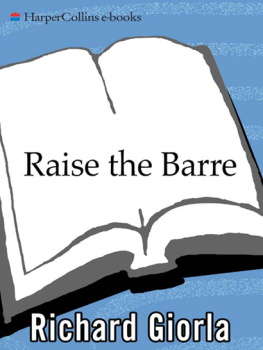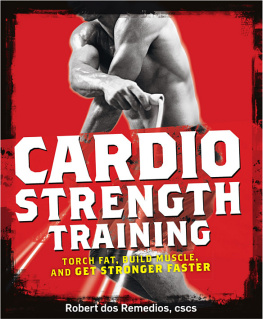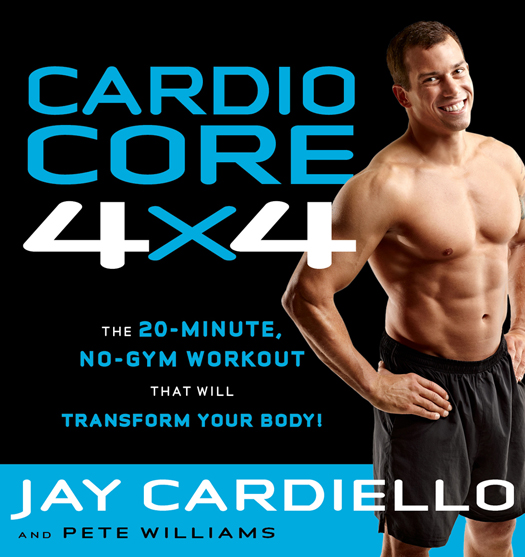

To my father. Thanks, Dad.
INTRODUCTION
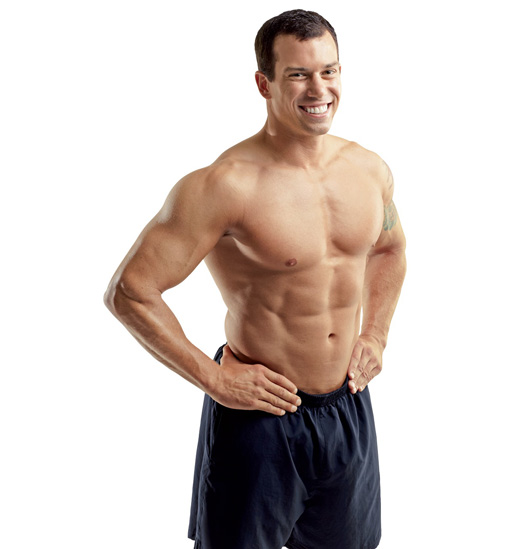
AS A KID GROWING UP in Cedar Grove, New Jersey, I was an international martial arts champion, competing in tournaments as far away as Hawaii. Martial arts, like gymnastics or equestrian pursuits, takes place away from school, so I made it a point to stay in the loop by wrestling and playing football. During my senior year of high school, I went out for track and field, and even though I had little idea what I was doing, I excelled in the long jump and became a conference champion.
I ended up at the University of Arkansas, whose track and field program is the most successful in NCAA history in any sport. The Razorbacks have won 42 national titles in track and cross-country, producing a long line of Olympians. When new athletes arrive on campus, theyre measured for championship rings. Thats the standard of excellence.
My career as an Arkansas long jumper ended horrifically after just one season when I slipped on the runway prior to the national championships. My foot went out from under me, and I came down with so much force on my heel that as the foot kept sliding, the vertebrae went forward, a disk went backward, and I cracked my tailbone.
Realizing that my athletic career was over, I decided to transfer, seeking the best academic school that would have me. I enrolled at the College of William & Mary.
During my years at the historic campus in Williamsburg, Virginia, I helped coach the track and field team, pouring my passion into the athletes and living vicariously through them. The team set 16 school records, and other William & Mary athletes took notice. I trained a quarterback named Michael Cook, who, though undrafted by the NFL, latched on with the Cleveland Browns and later played in NFL Europe.
Shortly before graduation, I wrote more than 300 letters to pro sports teams and agents. I offered to work for free in exchange for the opportunity to prove myself as a strength coach. Thus began a series of valuable if low-paying jobs with teams in the Arena Football League, the NFL, Major League Baseball, and the XFL, the short-lived football league created by WWE founder Vince McMahon.
At no point did I make more than $300 a week. Most of the time, I earned less or nothing, quite literally paying my dues throughout my late twenties. In between gigs, Id earn money however I could, at one point spraying Bloomingdales customers with cologne and wondering how Id ever make it in the field of athletic training. I thought of Kurt Warner, who stocked grocery store shelves when his football career stalled before emerging as one of the best NFL quarterbacks ever.
In the fall of 2001, not long after the XFL folded, the Cincinnati Reds hired me for $25 per diem to help with their instructional league players in Sarasota, Florida. One sunny morning, with 30 players lined up on the field before a workout, one of the coaches turned to me and said, Okay, Cardiello. You have 20 minutes.
Twenty minutes? We had no equipment out on the field, little space, and I knew we couldnt just do sprints. I remembered some routines I had done with one of the pitchers that focused on hip stability and building lower lumbar strength.
I told the players to get down on all fours, and I put them through a series of movements to strengthen and stabilize their shoulders, midsections, and hips. Thus was born the Cardio Core 4x4, a 20-minute routine that could be done, as it was that day by the young Reds, in as little as a 4x4-foot space.
When that gig ended, the Reds offered me a job as head trainer and conditioning coach for their Class-A minor league ball club. Finally, I figured, a real title with real money. Instead, they offered just $1,500 a month, which would not go far in Southern California, where the team was located.
Frustrated, I returned home to Cedar Grove, or Cedar Grave, as I called it. You were born there and you died there, like in so many other American small towns. Its the type of place where guys in their late twenties get together at the local restaurant and reminisce about their high school football glory days.
That wasnt the life I wanted.
I walked into a boxing gym in Cedar Grove and saw Al Cole, the former cruiserweight champion, stretching.
I approached Cole and said, Your hips are asymmetrical.
Excuse me?
Your hips, I repeated, are asymmetrical. Youre imbalanced.
He raised an eyebrow. Im the cruiserweight champion.
Former, I said, smiling. Look, Ive watched you doing your moves here, and youre not training like a fighter. Youre training for aesthetics.
Cole must have admired my brash approach or at least agreed with what I had to say. I came on board as one of his trainers and later worked with Jameel McCline, a top heavyweight.
During this time, my father suffered a fatal heart attack while attempting to start the lawn mower. What made his death even worse was that I was living nearby and had postponed going over to cut the grass.
I trained McCline for 13 weeks, but when it was over, I quit. The uncertainty and instability of the training profession were getting to me, and now I no longer had my father and mentor, the guy I most wanted to please.
So I moved to New York City, put on a suit, and went to work for ESPN in radio sales. I realized quickly I was not meant to sit behind a desk, and I sighed whenever I read a story about athletes I had trained whose careers were thriving. I was thrilled for them, but I wondered why I couldnt find similar success. Since there were other trainers building significant careers, I vowed to give myself one more year to make it in the business.
I went to work at Clay Fitness, which at the time was Manhattans premier gym, attracting a whos who of celebrities and other successful professionals. I threw myself into the job, training as many as 16 clients a day over 18-hour shifts.
Clients appreciated my work ethic but also my unusual approach, inspired by knowledge I had gained between gigs in pro sports working with physical therapists. Since I knew what it took to rehab a surgically repaired knee or shoulder, I focused my program on prehab, a proactive approach to preventing injuries by strengthening the many small stabilizer muscles of the hips, shoulders, and midsection.
The Cardio Core 4x4, hatched on the grass of the Cincinnati Reds ballpark in Sarasota, was now an integrated, efficient workout. Publications such as the New York Times took notice. So did 50 Cent, the rapper and actor, who offered me a contract to train him full time.
For the next 4 years, I traveled the world with 50 Cent, helping him create one of the most impressive physiques in the world, producing the vehicle to drive his success. During 2-month breaks, I added other celebrity clients such as Val Kilmer.
I appeared on 50 Cents reality series The Money and the Power and on The Real Housewives of New York City. My work was continually featured in magazines and in New York newspapers, and I began making regular appearances on television programs. I began spending summers in the Hamptons to be closer to my clients from the worlds of entertainment and finance and traveled to South Florida to train a prominent polo team.
These days, Im around the money and the power all the time, and Im referred to as a celebrity trainer, as if Im a celebrity who works as a trainer rather than a trainer who works with celebrities. Im flattered, though a little startled, when I teach group fitness classes and someone asks for my autograph. Im still the kid from Cedar Grove who just a few years ago was working for $25 a day for the Cincinnati Reds.
Next page
